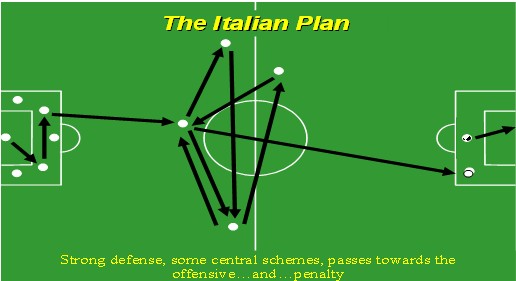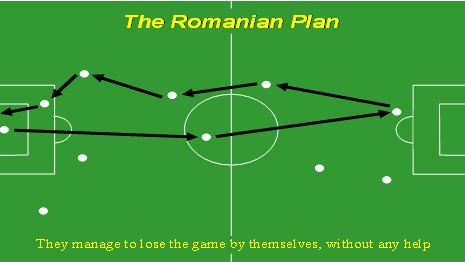Is It Really Necessary to Teach Culture?
Gabriela Mihaescu, Romania
Gabriela Mihaescu has been an English Teacher at “Al.I.Cuza” National College for 7 years. After her Bachelor’s Degree in 2004 graduating the Faculty of Letters from Craiova, in 2006 she obtained her Master’s Degree with the paper: Raising Cultural Awareness: Modes of Teaching Culture in High School.
E-mail: gabymihaescu@gmail.com
Menu
Aims of the article
What should we first teach?
Why teach culture?
Classroom research
Classroom activities
Conclusions
References
The aims of the article are to:
- prove how important is to develop students’ intercultural understanding;
- demonstrate that language and culture are strongly connected, they are part of each other: language implies culture and culture implies language;
“Communication requires understanding, and understanding requires stepping into the shoes of the foreigner […] while always putting the target culture in relation with one’s own” (Politzer, 1959)
As foreign language teachers we are permanently interested in our students’ use of language, we want them to increase in proficiency and to be able to express their feelings and thoughts correctly from the grammatical point of view. But what we forget is that there is also some culture which is waiting to be discovered and taught. Teaching grammar is as important as teaching vocabulary, reading, writing, and all these take a lot of time because we want our students to understand and master them. But our students cannot truly master the language until they master the cultural context in which the language occurs. Our students should be aware of the many cultural differences which exist around the world, they should learn that things such as gestures, attitude, behavior, which are appropriate in their own speech community may be perceived differently by members of other speech communities.
The study of culture during the foreign language class can increase student motivation and can also improve attitudes towards language learning. Students need to be aware of their own culture and to learn about the different cultures around the world by comparing them with their own. By doing this they will gain knowledge of the foreign culture and also of their own culture. Only in this way can they develop cultural awareness. And by training students in comparing and contrasting different elements of culture we also help them reflect upon the values, expectations and traditions of others. Every nation in creation has its favorite drink, food, music, dances and if we are not aware of this, learning the language is useless.
Not long ago I analyzed my students’ reaction to teaching culture during the foreign language classroom. I was interested in their language improvement, their knowledge improvement and their involvement during the foreign language classroom. I wanted to see their attitude towards the subject.
In October, 2010 I took part in a Course for teachers in Great Britain, Southampton, due to a Comenius funding and I considered it a very useful tool for my research. I told my students about my English experience and I used all the materials gathered there to present them the English way of life. They were very interested in what I told them and they even asked me a lot of questions. They really wanted to know more about England and its people. I used video and audio tapes and written texts to teach them different aspects of culture. I asked them to do individual research and work and find out more about what cultural difference really means. Working in teams they focused their attention on comparing and contrasting different elements of culture.
Within weeks there could be seen notable changes in my students’ attitude during the English classroom. I can say that their English improved a lot, the weaker students got themselves involved in my lessons enjoying themselves in extracting every piece of cultural information from the materials available to them. The English class changed into a beautiful and engaging one. They seemed to be more motivated to learn and they showed great interest in the foreign language culture.
Here’s what some of them concluded:
‘I can say that I now know how to recognize everyday cross-cultural mistakes’
‘I improved both my knowledge and my vocabulary’
‘I now find cross-cultural misunderstandings quite funny because I can understand them’
‘I improved my ability to communicate’
‘I am now able to appreciate my country’s culture’
‘I am more confident in myself’
Language and culture are so closely connected that we, as teachers of foreign languages, should not teach the one without the other. My students gained the ability to evaluate critically practices and products of their own culture and of the other culture. They also enriched their vocabulary and their communicative competence.
My students got so much involved that they came with some great ideas and results. They compared songs, films, and they studied and analyzed words and song lyrics, etc. ‘There are cultural differences even in football if you know where to look for them’ said one of my students and, amazingly, after he compared different football games, came with the following schemes which he found on the internet:

‘Germans always know what they want’

‘Italians score when you less expect’

‘Brazilians are famous for their ability to twist and turn and play with the ball. They score some of the most beautiful goals in the world’

‘Romanians are well-known for beating themselves’
What I learnt from this experience is that our students are waiting from us to get them involved in our lessons because they have so many things to share with the others. We should make them feel useful and help them learn everything by themselves by searching, analyzing, comparing and contrasting.
Teaching culture is as important as teaching language and if we want we can make them an integral part of our lessons.
Cultural map
Time needed: 1 week
Aim:
- to stimulate students’ interest in looking for information;
- to encourage students to work in teams;
- to stimulate students’ intellectual curiosity about the target culture and empathy
towards its people;
- to help students develop the needed skills to locate and organize information about the
target culture;
Procedure: Students are asked to work in teams. Each team will have to work on a given theme in order to create a cultural map. The map will present the cross-cultural differences that exist between England and Romania in education, traditional drinks, food, dances, music, architectural styles and main celebrations during the year.
Each team will have to collect information and pictures from the different sources available to them and to come up with a scheme which in the end will be added on the cultural map. Each team will present its findings in front of the classroom.
Find out how much you’ve learned
NB(this activity is based on the previous one)
Time: 15 minutes
Aims:
- to test students’ understanding of the foreign language culture;
- to test students’ acquired knowledge;
- to stimulate students’ interest in looking for information;
Procedure: Students are split in two teams. There will be a knowledge acquisition test based on the information acquired from the cultural map. Students from each team will come one after the other in front of the classroom and will ask each other a question based on the information gathered on the cultural map. The team which offers the most corrects answers will win the contest.
We all need to develop our cultural understanding in order to make ourselves understood in different cultural settings and to avoid cross-cultural misunderstandings which sometimes put us in embarrassing situations. Our students need cultural understanding in order to understand the others.
Brooks,Y (1968). Teaching Culture in Foreign Language Classroom. Foreign Language Annals
Bruner, J (1996). The Culture of Education. USA: Harvard University Press
Cancova, M & Gill, S (2001). Intercultural Activities. Oxford University Press
Reynolds, J. and Skilbeck, M. (1976) Culture and the Classroom. London: Open Books
Samovar, L., Porter, R. & Jain, N. (1981) Understanding Intercultural Communication Belmont, CA: Wadsworth
Tomalin, B. & Stemplesky, S. 1993 Cultural awareness. Oxford: Oxford University Press
www.peacecorps.gov/wws/guides/looking/contents.html
http://carla.acad.umn.edu
www.aitech.ac.jp/Cullen-Culture.html

The British Life, Language and Culture course can be viewed here


|